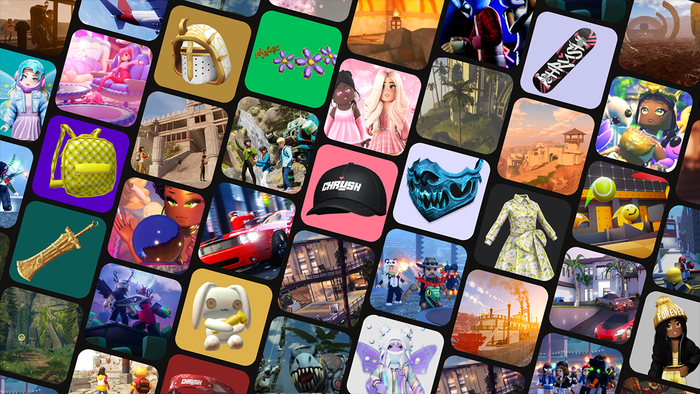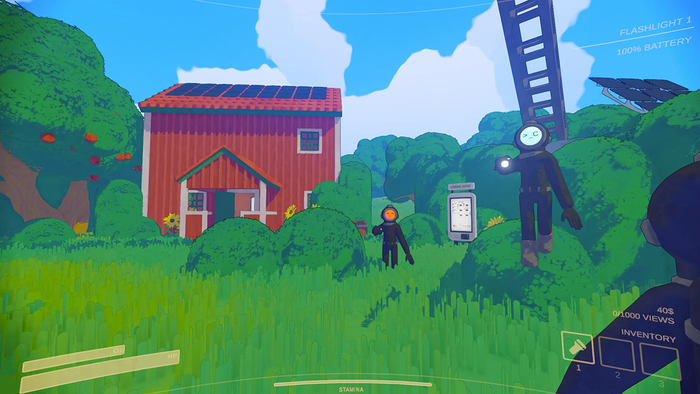With a modified Tech Deck, players will take to spherical cities to do tricks in Doors to the City, feeling some of the powerful love and connection its creator has with the city they call home.

The 2018 Game Developer's Conference will feature an exhibition called Alt.Ctrl.GDC dedicated to games that use alternative control schemes and interactions. Gamasutra will be talking to the developers of each of the games that have been selected for the showcase. You can find all such interviews by clicking here!
Doors to the City will have players taking to spherical cities to do skateboarding tricks, doing so using a modified Tech Deck that responds to touch. By pressing on various parts of the Tech Deck, players can guide their movements through these miniature planets, all while surrounded by a soundtrack that gives the place a sense of home.
That's no accident, as developer Ben Poynter set out to capture the love and connection he feels for NYC with this game of skateboarding and exploration. Gamasutra spoke with him to learn about capturing this sense of home out of invented cityscapes and infinite skate parks, which players will be able to experience for themselves at Alt.Ctrl.GDC this March.
What’s your name, and what was your role on this project?
Hey! Thanks for asking. My name is Benjamin Poynter, and my role on the project is essentially lead developer. I was responsible for all the 3D visuals, animation, rigging, programming, and design behind Doors to the City. I collaborated on this project with the genuine Josh Craig who works in the same lab space with me at Looking Glass in NYC. Josh's likeness, which I sculpted and animated, is in the game as well as his own music. The 3D floating interactive lightfields (i.e. holograms) that the controller is connected to is courtesy of Looking Glass where I work as Unity Developer, 3D Artist, Animator, and World Builder.
How do you describe your innovative controller to someone who’s completely unfamiliar with it?
Good question. Well, it's an old Tech-Deck skateboard that has been fashioned into a method of controlling the digital game you see on the screen. How that is achieved is through routing the Tech Deck through conductive buttons connected to a special toy called the "Makey Makey" into the PC. If you press a surface or conductive button on the little skateboard, it will trigger a command in the game - hitting the back of the deck will make you jump!
Nostalgia is a definitive part of games as customs, or designs repeat themselves. The Tech Deck was another way of fleshing out how the past can make an impact on the present.
What's your background in making games?
I've spent roughly 5 years making my own single-artist pipeline games, visual art projects, installations, and more. I gravitate specifically towards the visual aspect of games, as my background is situated in the fine arts, att the possible expense of a more direct, computational path in runtime. As time has gone on, I've felt myself get more situated in programming games where the interaction side of them shares qualities with the visual side. Such past works I've made are In a Permanent Save State which was nominated for 'Best Serious Game' at the International Mobile Gaming Awards 5 years ago, in fact, at San Francisco in March.
Before digging deep back into the studio in my current role, I spent a sizable period of time teaching CG & Animation for the New York Institute of Technology in Beijing, China and Manhattan, NY. As a special note, my lovely wife wants me to mention Beijing is where I met my, beautiful, lovely, lovely wife.
What development tools did you use to build Doors to the City?
The old one-two punch of Autodesk Maya and Unity 3D, with an assist from Adobe. At the apex of developing Doors to the City, this is when I felt a true confidence and fluidity with how I could handle the C# language and the various animations and technical aspects I brought into the system. I had a strong foundation in Maya due to my previous role as Assistant Professor in CG and Animation. Unity is the program of choice which connects into the devices we have at Looking Glass including the HoloPlayer One, the Super Pepper, and the internal for now 2k Cube (tentative).
What physical materials did you use to make it?
As for the Tech Deck, of course, the little skateboard itself, the Makey Makey toy input, strategically placed conductive tape, and strategically placed hot glue! The Tech Deck itself will have a specially evolved version(s) at the show in March that will make it look like a proper arcade-style controller. I live in an experimental world with a lot of experimental people and time-sensitive situations, so time flies! As for the physical materials of the HoloPlayer, the fine folks in our Hong Kong or Brooklyn lab may be able to give you a better answer. I don't want to keep you all day!
How much time have you spent working on the game?
Essentially half a year. I consider the official "birth" of Doors to the City to be July 4, 2017. I finished the large concept illustration that hangs above my lab desk which shows all the worlds as if to signal 'this is where it begins'. In moments out of the lab or moments when it was critical to dev time success, I worked on the game among several other interactive games and apps (including Marshall's Theory which appeared at Games for Change and IndieCade). Doors to the City was/is an incredibly fun project. Also, one of the most challenging for me to make in my career thus far.
How did you come up with the concept?
The city. Lights. Feelings. Emotions. I work in NYC and I cross the Port Authority, 7 line, and Pulaski bridge to get to the lab every day. It seems, every day, the same romantic feeling about New York City never fades. The 'heart on my sleeve' aspect of how I feel about my surroundings coupled with my m.o. as a visual artist led to the foundation of something to really pursue.
It just so happened I began talks with the ultimate avatar: Josh Craig, musician, DJ, artist, model, and more. He had similar thoughts about coasting through the city and feeling surroundings, and the initial catalyst was a game that could coincide with his music and exist in its own right. The last piece of the puzzle was: how can this "game" look the most 3D and take advantage of a special, interactive floating lightfield? Make the city skateparks planets. The cities in the game? Make them worlds that have no boundaries between them. The metaphor of the planets went hand in hand with surroundings we experience every day. The more you move, the more the concept of "home" is the wild we inhabit.
What thoughts went into creating the striking spherical worlds of Doors to the City? Why did they feel natural for your skateboarding game?
I wanted to create something that had a gritty, but cyberpunk style to it in the veins of my illustrative style. So, I started with just that: a large scale concept illustration. Completed half a year ago, the design of the 3D worlds I sculpted, colored, animated, and coded hardly deviated from the initial concept drawing. To be creative sometimes is to commit the "too" colorful thoughts you have into a set system. I know with a project like Doors to the City, several details could fall through the cracks, so the initial concept drawing commanded the final project into the end.
The design of the worlds felt natural to the game as they captured simultaneously the neorealism of what a city is (a miserable pile of concrete) with the majestic vision of what a city could be from the heart.
What difficulties did you deal with in turning a tech-deck into a controller? In making controlling the game with it feel right?
Intuition, approachability, and scale. When you think of a controller, you don't immediately think "tiny skateboard". Informing audiences of choice into trying it out is both fun but demanding. The scale coincides with that and its ability 'to' be controlled. The game itself has minimal commands for a skating game due to the scale of the Tech Deck. I feel adjusting the Tech Deck over time and until now is a constant process of reconciliation in terms of constant feedback and adjustment. Getting an optimal control scheme that is as universal as possible to any person is my greatest apprehension about the Tech Deck. Then again, that goes for games as a whole. Its a fun but fearful process!
Doors to the City is tied to the album Closed Doors. What drew you to connect this game and The Josh Craig's music? Why do you feel they bond together?
Josh and I are both people who are very out there at times. Josh is very open and active in collaboration. As am I, despite the fact that I create a great majority of my works alone. We saw an opportunity to clash our styles together and make a game that informed sound and sound that informed a game. They bond together because they share an equal, creative wavelength.
I am proud of the way we have worked together on this project. The surprising part is just how far it has been taken. To this day, I'm surprised that Doors to the City has gone from words on a whiteboard in the lab to the worlds they are now. Doors to the City is the result of working with fantastic people, being around fantastic people, and the perpetual creative grit where creation never stops.
How do you think standard interfaces and controllers will change over the next five or ten years?
I think the 'standard' controller in the future will be a special balance between the interfaces players know and cherish (pad, controller, keyboard) with ways that hope to advance the capability of interaction in new ways while paying homage to something we know. The things I work with in the lab at Looking Glass are a way of lending itself to something in that spirit. You merge the romanticism of sci-fi and occasional button input with a floating, 3D screen in front of you with RealSense finger touch capability. Over time, interaction can repeat itself so many times until playing with digital realms requires a new method. I feel like that time is emerging. Given the medley of new tools that are available in the world, seen or unseen, why wouldn't we embrace the fun of exploring new things? It is just as easy now to 'make' as it is to 'consume'.
Read more about:
event gdcAbout the Author(s)
You May Also Like







